My site has experienced many phenological changes over the course of my visits. The most obvious was the change in vegetation– in October, the trees retained the majority of their leaves, but by November, they were nearly all gone. Throughout the winter, the trees and undergrowth remained dormant and mostly covered in snow. Then, in March, small buds began appearing. Now, in mid-April, buds are finally converting into identifiable leaves and greenery is returning.
Another notable change was the state of the small stream intersecting the path. It was originally small yet noticeable, but throughout the fall it began to dry up. Then, when I visited in January, it was completely smothered by snow. As the snow melted, its flow began increasing again, and it is now supplemented by spring rains.
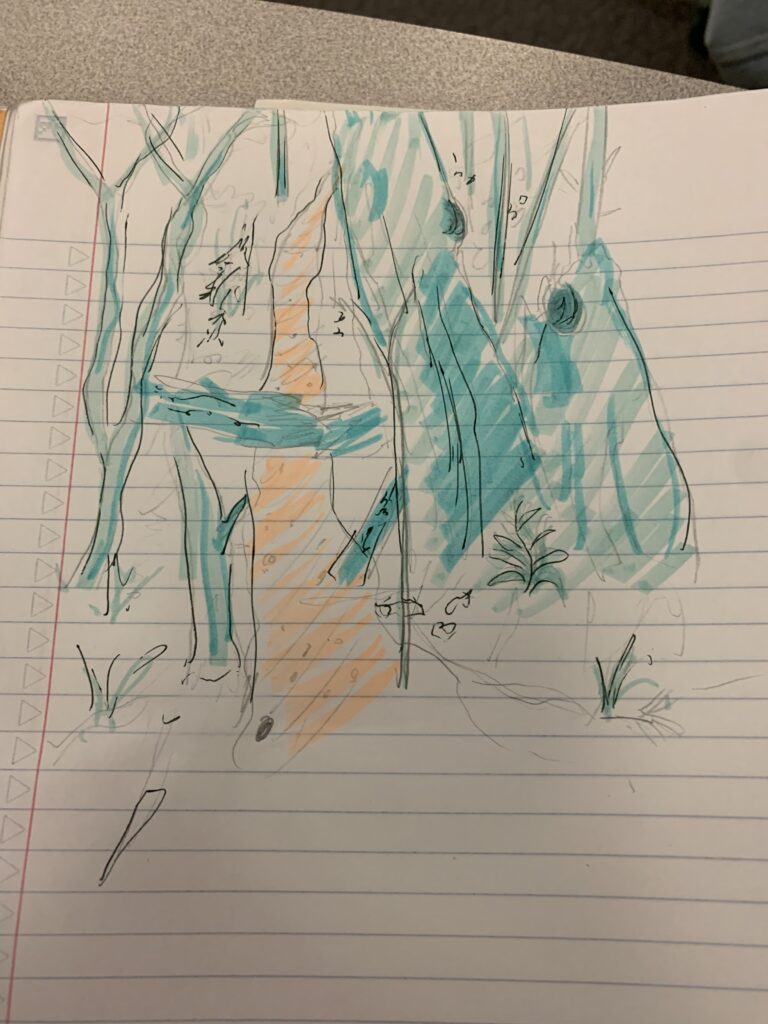
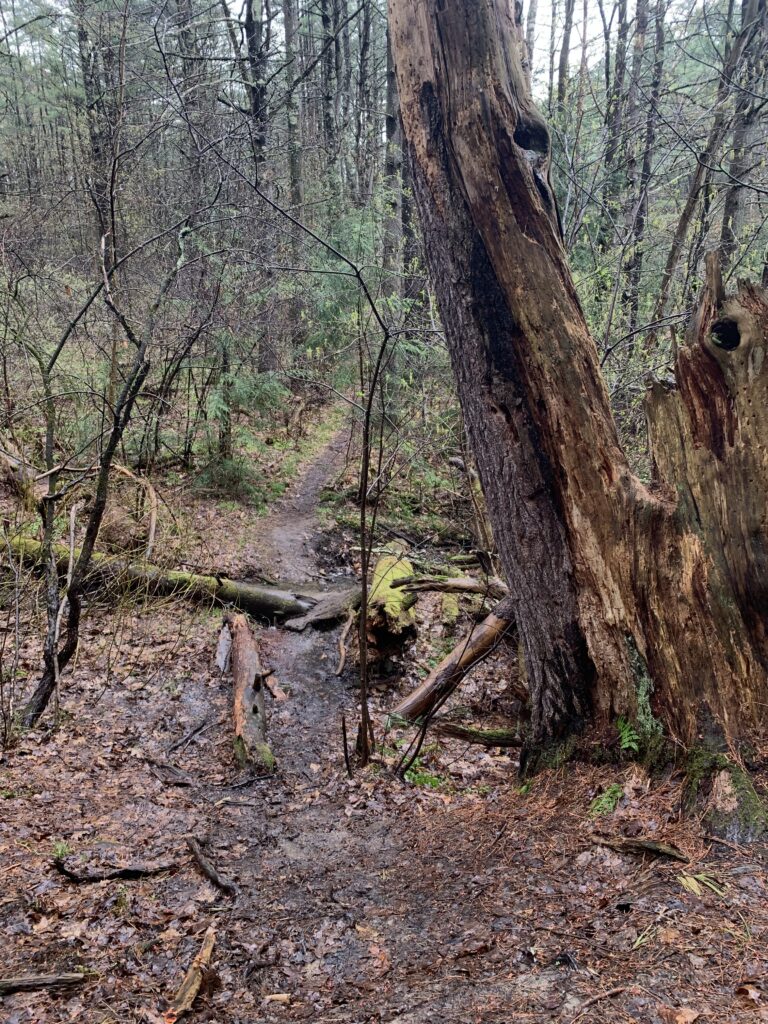
The most notable landmarks of my spot are pictured above. They include the massive dead tree at the entrance of my site, the four mossy logs bordering it, and the path and stream that intersect in the center.
Less obvious but still crucial to the place is the vegetation that I have familiarized myself with. This includes the small Eastern Hemlocks, various mosses, and invasives including the Common Buckthorns, Barberry, and Winged Euonymus.
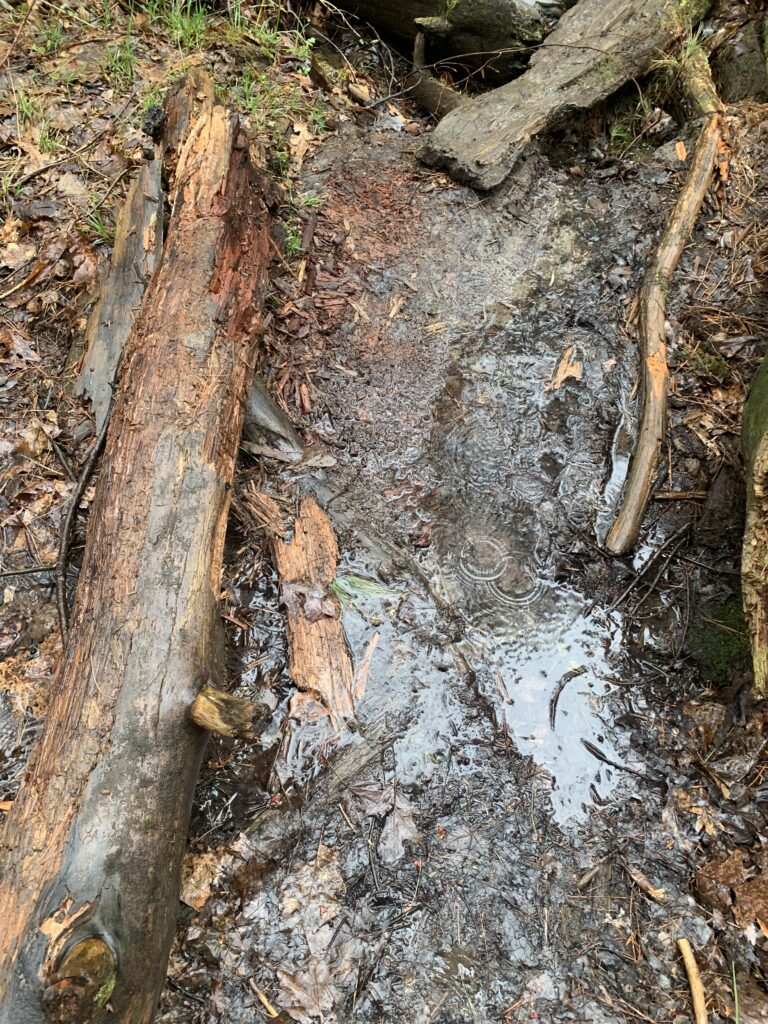
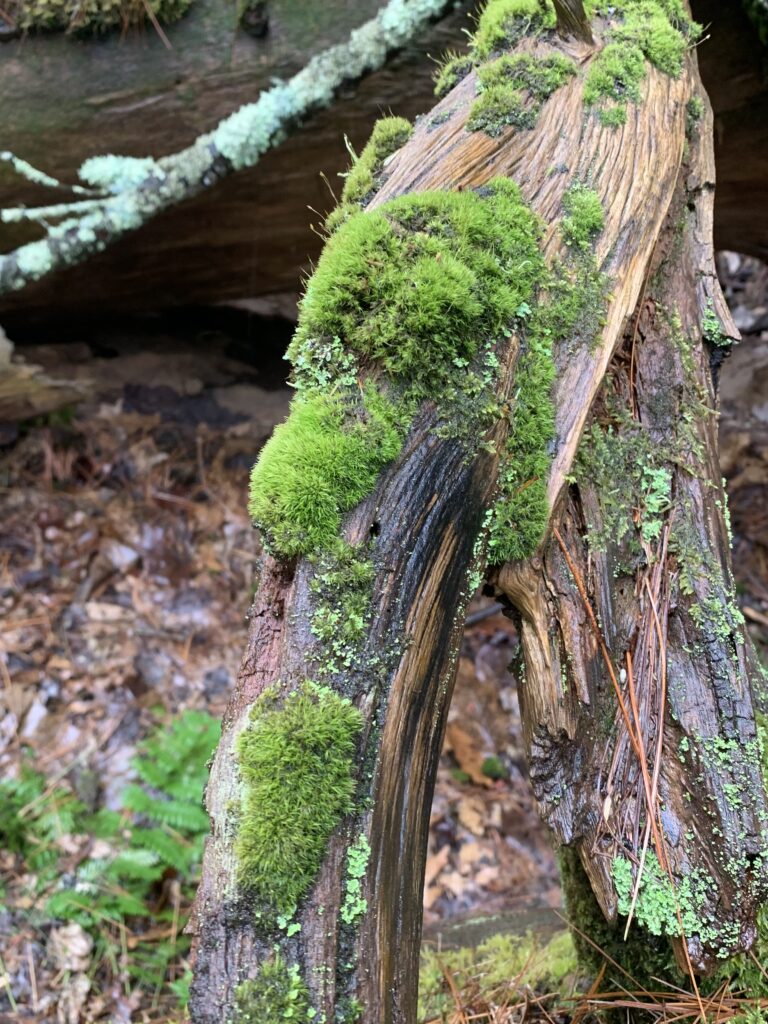
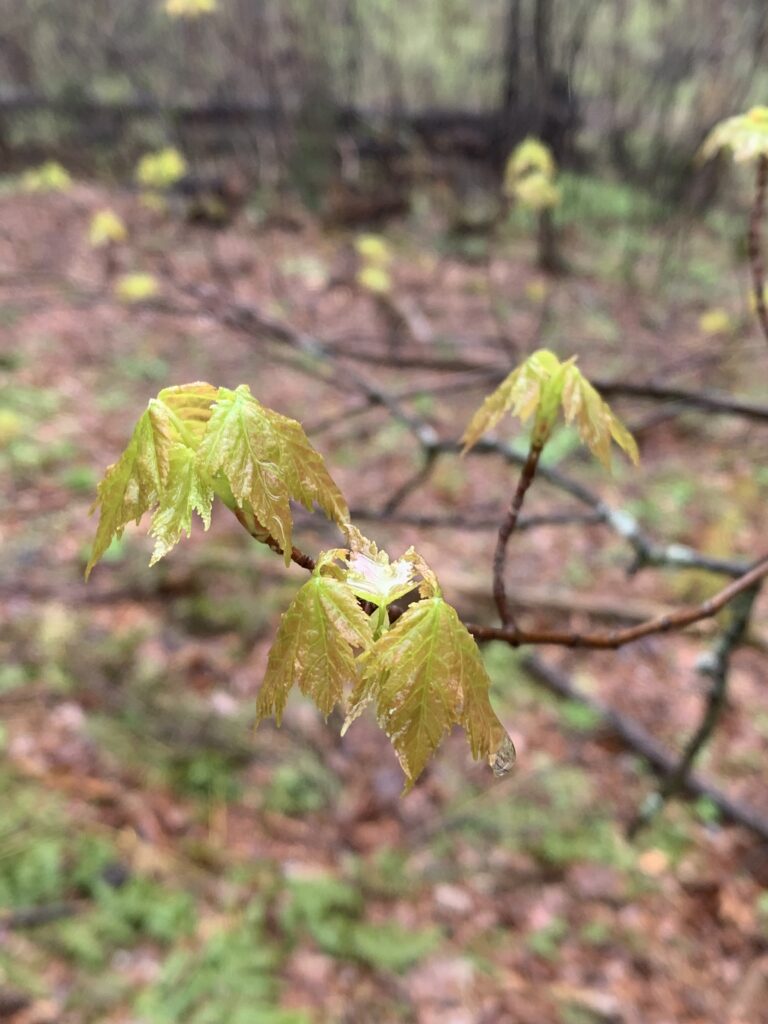
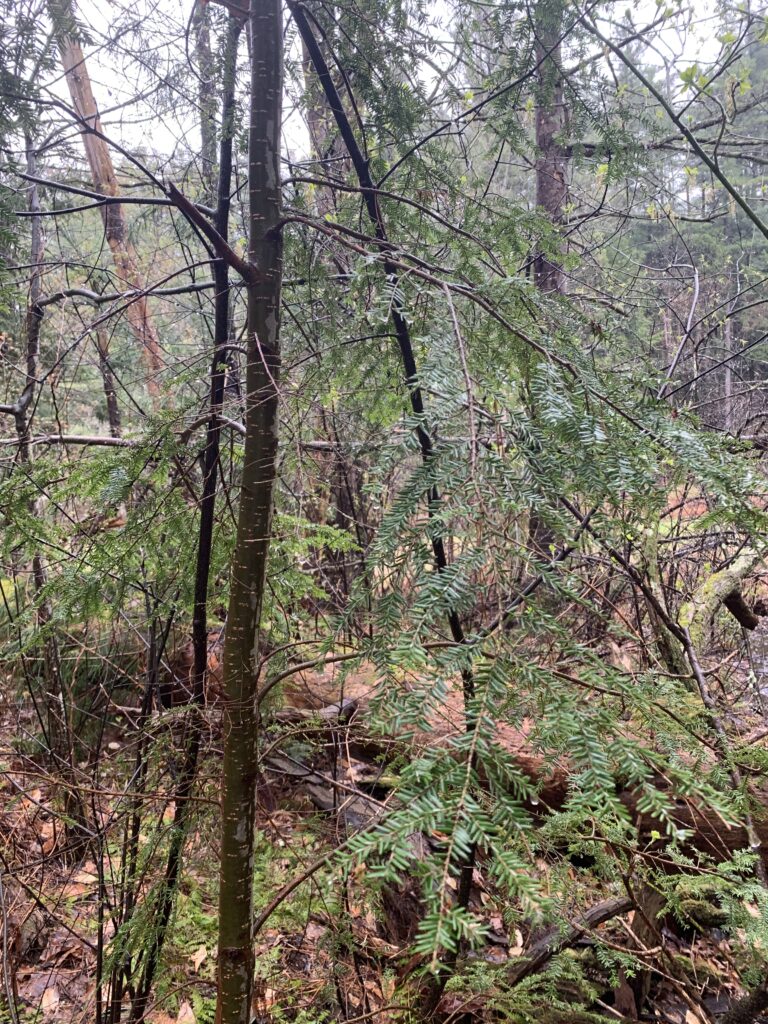
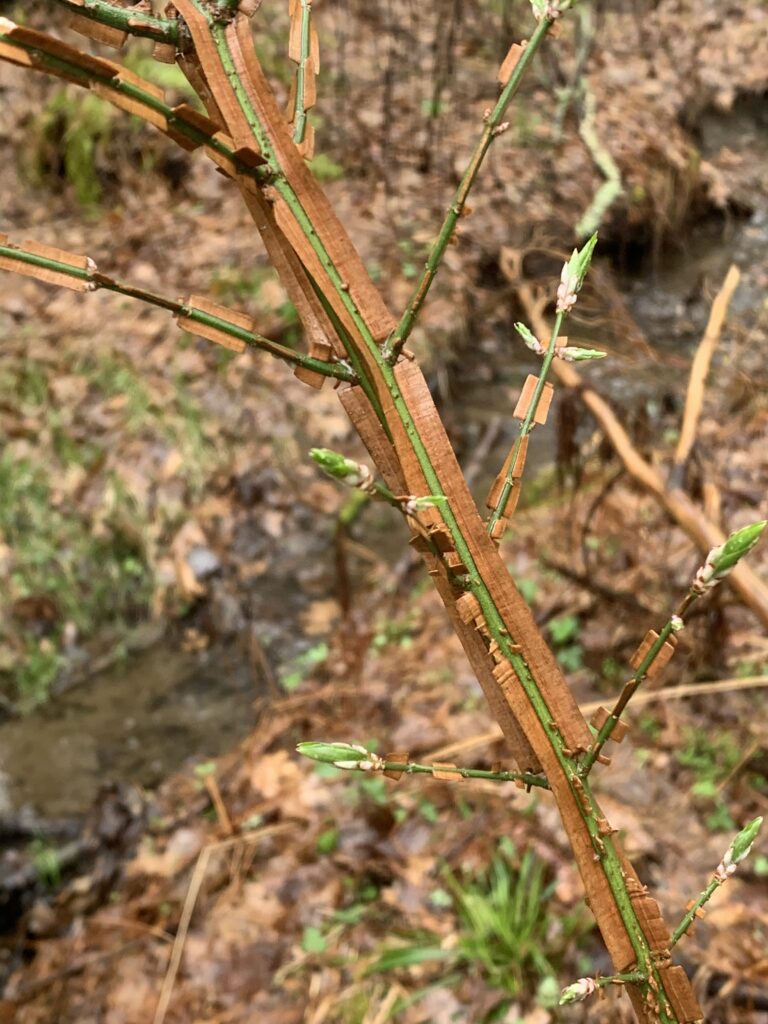
My place is relatively well-traveled due to the path that goes through it. This combines nature and culture by allowing humans to easily traverse and enjoy the benefits of the woods. Tentatively, I would say that I consider these travelers as well as myself to be a part of my phenology place. We all have a relationship with the nature we spend time in, even if we consider ourselves to be temporary visitors. The more often I visit a place, the more I feel connected to it, which is why I feel apart of my place after several months of study.
